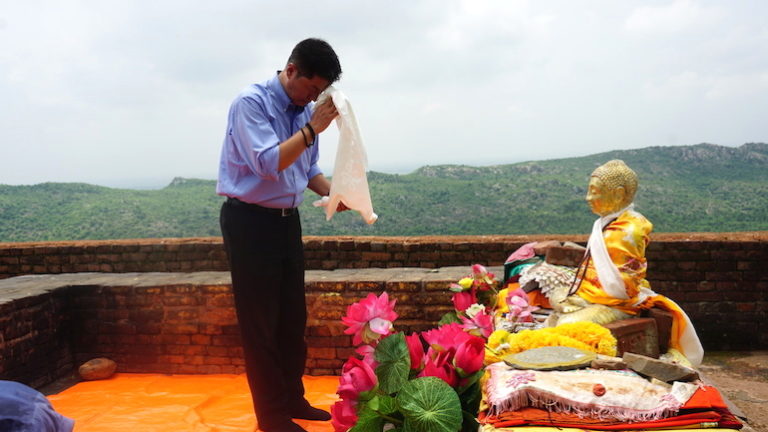Varanasi: The President of Central Tibetan Administration, Dr Lobsang Sangay on Friday addressed the students and faculty at the Central University for Tibetan Studies, Varanasi (CUTS). Founded under the leadership of His Holiness the Dalai Lama and late former Prime Minister Jawaharlal Nehru, University for Tibetan Studies, Varanasi (CUTS) is a premier institute for Tibetan Buddhist philosophy, sciences and language.
In his address, President said, “His Holiness the great 14th Dalai Lama’s visionary leadership has triumphed Cultural Revolution and China’s successive efforts to erase Tibet. The traditions of the Nalanda Mahavihara that were destroyed in Tibet continue to flourish in exile.”
President Dr Sangay, who was on a two-day visit to the University, presented a power-packed narrative on the revival of Tibetan Buddhism, mainly Nalanda tradition in Tibet, India and China.
“In destroying monasteries and religious institutions in Tibet, as the late Panchen Rinpoche declared in his 70,000 character petition, the Chinese Communists tried to eliminate the Tibetan identity, culture and its Buddhist traditions and they thought they had succeeded,” Dr Sangay said.
“But His Holiness had a vision backed by a strategic plan: Plan A, B, C D and E.”
Plan A was to rebuild Nalanda based monasteries and nunneries in India. Therefore the Tibetan Buddhist lamas in Buxar worked really hard and settled all over India, especially in Karnataka, to rebuilt monasteries. Sixty years thence, you will see Nalanda based monasteries all over India; people call it Tibetan monasteries but these are Nalanda based mahaviras that we have rebuilt.”
“In exile, we succeeded in rebuilding and reviving all the major monasteries and nunneries that were destroyed in Tibet. Now we have 265 monastic institutes (monasteries and nunneries) and a total of 42,000 monks and nuns.
Plan B was to revive monasteries and nunneries in all Himalayan regions. “The Himayalan region, given its historical, cultural and geographical proximity to Tibet, can help revive Buddhism in Tibet in the worst case scenario,” said Dr. Sangay.
Explaining that Plan C was ‘West Pivot,’ Dr. Sangay said “now we have around 2000 Buddhist centres around the world. This plan was important : in case the people of Himalayan region due to political reasons, faces difficulties in crossing the border. The dharma centres around the world can take continental airlines and fly over Beijing to Lhasa and revive Buddhism in Tibet.”
Dwelling on Plan D, Dr. Sangay said that revival of Buddhism in Tibet was at the very core. “Geshes from Tibetan exile communities have gone to Tibet and those inside Tibet have all worked hard in rebuilding monasteries. They have rebuilt monasteries and nunneries to the extent that their monasteries, for example Larung Gar have strength of over 10,000 monks and nuns, of which more than 2000 are Chinese. Yarchen Gar alone had five to six thousand nuns.”
Dr. Sangay said with conviction that we have succeeded in the implementation of all four plans: plan A in exile, B in Himalayan region, C in West, plan D inside Tibet.
“Our plan E; to revive Buddhism inside China have also succeeded. The Communist party membership is only 82 million, where as there are between 300 to 400 million Buddhists in China. Instead of Communist China succeeding in destroying Buddhism in Tibet, Chinese people have embraced Buddhism in China. This is one reason why the Chinese government is afraid of His Holiness the Dalai Lama,” affirmed Dr. Sangay.
President Dr Sangay enunciated that Tibetan culture and identity is alive and is here to stay. “Buddhism lasted for 2500 years and will last for another 2500 years. As long as Buddhism is there, there will be Tibetan civilisation, Tibet and Tibetan people. This success story of revival of Nalanda tradition reflects the rugged determination, hardwork and the resilience of the Tibetan people.”
“This is the success story and the fulfilment of the vision of His Holiness the Dalai Lama.

